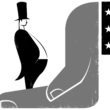The Democrats running for president all promise large spending programs if elected—Medicare for All (or for all who want it), free or cheap college, infrastructure development, and (for Andrew Yang) a $12,000 annual income grant. Given the interest generated by my two recent Washington Spectator pieces on wealth taxes and financial transaction taxes, it seems worth writing more about possible revenue sources for these plans.
Adam Smith is my go-to economist on taxes. The Wealth of Nations (in 1776) laid out four canons regarding taxation—fairness, certainty, convenience, and efficiency. While the world undoubtedly has changed since then, the characteristics of a good tax system have not.
Fairness is probably most important. No one likes paying taxes, and many people think it unfair that they have to pay any taxes. Smith had a different take. For him, people with the same income should pay the same amount of money in taxes. Smith also held that someone should not pay a larger percentage of their income in taxes than people making more money than them. Today this is referred to as the Buffet Rule, after Warren Buffet, who famously lamented that he pays a smaller fraction of his income in income taxes than his secretary.
The second principle, certainty, means there should be no surprises when taxes come due. People should know what they will owe. Convenience means that taxes should be paid when it is easiest to do so. People should not have to sell assets (for example, their home) in order to pay taxes imposed on that asset. This is why we tax capital gains when assets are sold rather than when they increase in value. Efficiency means that taxes should be easy and relatively costless to collect. It also means that taxes should not prompt people to radically change their behavior in undesirable ways in an attempt to avoid paying taxes.
Before we get to how sales, estate, corporate, and individual income taxes fare according to Adam Smith, let’s review the two taxes I have written about previously.
The wealth tax does extremely well on the fairness criterion, which is why most people are attracted to it. The tax would be paid exclusively by the rich—those who can best afford to pay higher taxes and the only group whose incomes have risen over the past several decades. The wealth tax does less well on the other three principles. It is hard to pay a wealth tax if one’s wealth includes little cash. Also, the value of many assets is not known with any degree of certainty, and these values can change rapidly. Someone with a large stock portfolio at the end of the year can see it collapse early the following year, leaving them little money to pay taxes on the wealth they had at the end of the previous year. Wealth taxes also fail the efficiency criterion. (On this, see my discussion of the infamous window tax in the September Washington Spectator.)
A financial transactions tax does much better than a wealth tax on all but the first criterion, fairness. It would be paid primarily, but not exclusively, by the rich. Everyone would know how much they must pay whenever they buy or sell financial assets. Since the value of financial transactions gets reported to the government, and the government already collects a very small tax on financial transactions, revenues are easy to collect. While the tax may lead to a slight decline in stock trades, the decline should be small with a small tax, and even that small decline will have positive economic benefits, such as reduced speculative activity in financial markets.
What about other taxes?
Andrew Yang wants a value-added tax (VAT) to pay for his guaranteed income. The VAT is essentially a national sales tax. Like a financial transactions tax, it is easy to collect; governments throughout the world already do this, and most U.S. state governments impose sales taxes. People know that they must pay more when buying things because of sales taxes, so it meets the certainty criterion. However, the sales tax fails the fairness test. Since the rich save a great deal of their income, rather than spend it, a large part of their income will escape a VAT or sales tax. In contrast, the poor tend to spend more money than their income (going into debt to do so) and will pay a larger percentage of their income for the tax than the wealthy.
A further disadvantage of VAT is that it will push up the prices of everything by the tax rate, just as a 7 percent sales tax will increase the prices that consumers pay for goods by 7 percent. An additional $1 trillion a year in tax revenue (enough to fund a $3,000-per-person guaranteed income) would require a 6 percent VAT if we exempt nothing from the tax. Exempting necessities, so that the tax does not fall so heavily on the poor, would require a much higher tax rate. Any exemptions would also make the VAT both complex and subject to political influence, as firms try to get their products classified as necessities.
Next, the estate tax.
Estate taxes have existed in the United States since 1916. They are taxes on the net worth of the deceased for the privilege of transferring property ownership. Historically, the U.S. estate tax brought in around 1 to 2 percent of federal government revenues, from 2 percent of all estates (nearly $40 billion at the beginning of the 21st century). Increased exemptions cut all these figures in half by the mid-2010s. The 2017 Republican tax bill reduced estate taxes even further. Currently, estates are taxed on asset values exceeding $11.4 million (up from $5.5 million before 2018).
Estate taxes do well on all of Adam Smith’s canons. They do especially well when it comes to fairness, because they have always had large exemptions (of several million in 2019 dollars) before the tax hits. They also do well on the efficiency criterion. Unlike a wealth tax, it would be hard to hide wealth because wealth must be declared when ownership is transferred from the deceased. The main economic drawbacks of the estate tax are that some assets are hard to value and some assets may need to be sold in order to pay the estate tax.
Bernie Sanders has proposed taxing estates worth more than $3.5 million. The Institute on Taxation and Economic Policy estimates that this would raise more than $30 billion a year. Another reform would generate a good deal more revenue—ending the so-called “step-up” provision of capital gains. When heirs receive an asset, they don’t owe taxes on any prior gains in the value of that asset. If the heir sells that asset, they only owe capital gains taxes on price increases since they took ownership.
Probably the biggest drawback of the estate tax is political: Republicans have condemned it as a death tax, implying that we will all have to pay the tax when we die, or our heirs will have to do so. In fact, only 1,600 estates (six out of each 10,000 estates) owed estate taxes in 2018; many owed little money, since the value of the estate barely exceeded the exemption amount. Even in the past, when exemptions were much lower, few estates were taxed. Nonetheless, talk of a death tax has led to popular opposition to estate taxes.
A simple way around this problem would be to tax any inheritance that people received above a certain amount (again, a few million dollars). The Urban Institute and Brookings Institute estimates that taxing such inheritances either at 35 percent or at 15 percent above individual income tax rates, would generate more than $60 billion in revenues annually. This would also create incentives for the wealthy to divide their estate among more heirs, thereby reducing wealth concentration.
Our next tax, the corporate income tax, does well on Smith’s taxation principles but only in theory. Because companies already keep records for their shareholders, the tax is easy to administer; and it is easy for profitable firms to pay. The tax itself is progressive because it is paid mainly by company shareholders. While middle-class individuals own some stock, the richest 1 percent own half of all stock shares and the top 10 percent around 85 percent of all stock.
During the 1940s and 1950s, corporate income taxes generated between 30 and 40 percent of total federal revenues. By the mid-2010s, it was under 10 percent. This change is remarkable considering that the ratio of corporate profits to total income in the United States has been rising since the 1980s and is now at record levels. The 2017 Republican tax bill made things even worse. It lowered the corporate tax rate to 21 percent from 35 percent. Corporate tax receipts fell by one-third (from $283 billion in 2017 to $196 billion), and the corporate income tax generated only 6 percent of federal tax revenues in 2018.
In practice, there are many problems with the corporate income tax. One big problem concerns tax avoidance. In a global economy, corporations can set up subsidiaries in tax havens, such as Bermuda. Through buying and selling between the parent company and its subsidiary, profits can be booked in those countries with very low corporate income tax rates.
Another problem is that the corporate income tax fails to treat similar companies equally. Some highly profitable corporations paid no taxes to the federal government in 2018 and have paid little or no taxes to the federal government for years. The list of corporate scofflaws includes Delta Airlines, Eli Lilly, General Motors, IBM, and Netflix. Amazon paid minus $129 million in taxes in 2018, despite making more than $10 billion in profits. Prudential Financial was paid $326 million by the federal government, nearly a quarter of its reported income.
To generate more revenue from corporations, Elizabeth Warren has proposed a 7 percent tax on all corporate profits exceeding $100 million, on top of what large firms owe based on the regular corporate income tax. The tax would apply to just the 1,200 most profitable firms in the United States and would generate more than $100 billion each year. Had Warren’s plan been in effect in 2018, Amazon would have paid more than $550 million in taxes rather than receiving a huge tax rebate.
While raising the corporate tax rate can raise a lot of money and will fall primarily on the rich, it must be done gradually, since stock prices and corporate taxes are closely tied, at least in the short term. The last thing a new president wants to face is a sharp stock-market decline due to a tax reform bill. It would be better to focus on closing corporate loopholes, so that firms making around the same amount of money pay around the same amount of corporate taxes.
Finally, we come to the individual income tax, which currently accounts for more than half of all federal government tax revenues (around $1.7 trillion).
One great virtue of the individual income tax is that it is progressive—people with higher incomes generally pay higher tax rates. Only for the top 1 percent of the top 1 percent of taxpayers does the Buffet problem arise. Due to automatic withholding from individual paychecks, the tax is easy for people to pay. Most people pay their income tax whenever they get paid by their employer. Other forms of income can also have taxes withheld. And people who are self-employed know that they need to pay estimated taxes each quarter.
Still, the individual income tax has many flaws. The greatest problem is that income from labor gets taxed at higher rates than income from wealth (such as interest, dividends, and capital gains). Besides violating Smith’s fairness principle, it violates the efficiency principle. The tax differential encourages people to redefine their income as coming from wealth rather than work. The most egregious example of this problem is classifying the income of billionaire hedge-fund managers as “carried interest” and subjecting it to lower tax rates (20 percent) than income from work (up to 37 percent). Taxing all income at the same rates avoids this problem. It would also generate a good deal of revenue—$127 billion per year, most of which would be paid by the very rich.
Another problem is that the individual income tax has become less and less progressive over time. The 2017 Republican tax bill cut top income tax rates to 37 percent, providing a huge windfall to the very rich. Returning the top rate to 39.6 percent would generate some additional revenue. But there is no reason to stop there. Most people don’t realize that in the 1950s and early 1960s, the top tax rate in the United States was a bit over 90 percent. Despite the very high rates, these were years of rapid economic growth, with the income gains distributed widely throughout the nation. They are regarded as the golden years for the U.S. economy.
After 1980, the top income rate was drastically reduced; it has hovered between 35 percent and 40 percent for the past three decades. During this time, incomes rose only for the top 1 percent of earners; the middle class has been squeezed, and median incomes have stagnated. This is why some economists (such as Thomas Piketty) and some politicians (such as Alexandria Ocasio-Cortez) have pushed for a top tax rate of 70 percent. Evidence regarding the economic effects of this are, at best, uncertain; but raising the top rate to around 50 percent seems like a safe bet on the efficiency front.
There are many ways to raise revenues and also make the U.S. tax system fairer and more efficient. These attempts, surely, will be met with opposition from Republicans and from wealthy donors to the American politicians who will have to pass any tax reform legislation and who need campaign contributions to keep their jobs. Priorities must be set. My top priorities are reforming the income tax so that capital income gets taxed at the same rate as labor income, the top tax rate gets increased significantly, the estate tax gets converted to an inheritance tax, and a small tax is imposed on financial transactions. These tax changes would raise significant revenue, primarily from the rich. They would also make the U.S. tax system fairer, at least according to Adam Smith. And to the extent that they change human behavior, it would be for the good of the economy.
The author is professor of economics at Colorado State University, author of Fifty Major Economists, 3rd edition (Routledge, 2013) and Understanding Piketty’s Capital in the 21st Century (Routledge 2015), and president-elect of the Association for Social Economics.







0 Comments